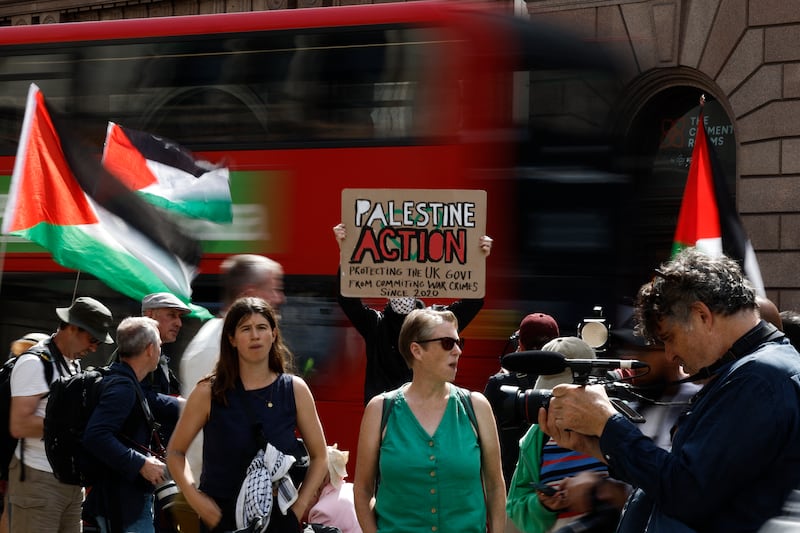After decades of falling air fares, the cost of flying has taken off. Aviation research specialist Cirium recently calculated that prices were up 32 per cent on 2019, the industry’s pre-Covid benchmark. While some might quibble with specific estimates, nobody disputes that it is happening – least of all the travelling public.
The reason is simple: too many people, too few aircraft. Capacity – basically the number of planes flying around above us – has yet to return to its pre-pandemic level, while the number of people travelling is at or close to that benchmark. So, with supply lagging behind demand, the obvious has happened and fares are rising.
People are taking to the skies because it was something that Government-imposed Covid lockdowns denied them. Their easing has sparked worldwide wanderlust. “There’s a sudden desire for experiences over things,” says Stephen Furlong, aviation analyst with Dublin stockbrokers Davy.
Michael Collins of industry consultancy TravelMedia.ie says the surge is incredible and shows no signs of stopping. “Everybody has just decided that they want to travel,” he observes.
READ MORE
This is more pronounced among some generations than others, he says. “People in their 70s think that if there’s another pandemic, they might not get the chance to travel again, so they are doing it now.” And money appears to be no object. Collins says that often, first class and business class seats sell before economy tickets, so high prices are no deterrent.
Air travel in the Republic – which two years ago was not expected to recover fully until 2024/25 – now looks poised to beat pre-Covid totals. Dublin Airport expects passenger numbers this year to at least equal the record 32.9 million that passed through there in 2019. Cork, meanwhile, expects to break previous records, with 2.7 million passengers this year, while Ireland West Airport Knock anticipates its best year ever.
Globally, the International Air Transport Association (IATA), said that traffic in May had reached 96.1 per cent of the same month in 2019. “Planes were full,” its director general, Irishman Willie Walsh, remarked. World airlines could earn $9.8 billion (€8.8 billion) in profits this year, a figure the IATA maintains amounts to just $2.25 for every passenger.
Demand shows no signs of slowing. Furlong maintains that people are prioritising travel over other spending, so will continue to fly despite the higher prices. Ed Bastian, chief executive of US carrier Delta Air Lines, told analysts recently that the “consumer is in good financial shape”.
Delta, which serves the Republic among many other countries, expects strong demand to continue, and stretch beyond the traditional northern hemisphere holiday season in many markets. As the IATA figures suggest, however, this rebound is not uniform; some parts of the globe continue to lag behind, while there are local trends too.
[ EasyJet reports strong third quarter results on back of summer travel demandOpens in new window ]
Europe is under particular pressure. A weaker euro versus the dollar is likely to lure more US tourists across the Atlantic this year. Similarly, China’s emergence from its latest lockdown is likely to draw travellers from there.
But the continent’s skies are overcrowded. The Ukraine war has closed a significant chunk of airspace to commercial travel, while elsewhere there are issues with air traffic control. Those constraints, along with a stated desire to avoid the chaos of last year, have prompted many big European carriers, including Air France KLM and Lufthansa, to depress capacity. Financial problems predating Covid mean others have simply not recovered.
“Airlines like Air France and Lufthansa are keeping a lot of supply well below pre-Covid levels. They’ve made a conscious decision to make sure that they can operate their schedules” Furlong says.
Collins believes that a shortage of pilots and crew has prompted carriers to rein in capacity. Bastian highlighted “pilot-training shortfalls” as a problem for US airlines when he spoke to industry analysts last week.
The impact of all these trends may not be immediately obvious to anyone booking flights, according to Collins. “A lot of airlines have restored routes, but they have cut back on frequencies, so there are not as many flights as there used to be. That’s why air fares are high,” he says.
With supply squeezed, fares are only likely to fall if people stop flying – presumably because fewer people can afford it – but that does not appear to be happening now at any rate, despite recession and inflation
Irish giant Ryanair is one of the few to have boosted capacity; it was due to receive about 50 new aircraft this year. It expects modest fare increases in its current financial year, which began on April 1st, after a 10 per cent increase on pre-Covid prices in the 12 months to March 31st. Aer Lingus has restored its capacity to 2019 levels. It says its charges are the same as 2022. However, the airline points out that inflation has pushed up costs over the last four years.
Elsewhere, only eastern European budget operator Wizz and flag carrier Turkish Airlines have increased the number of planes in their fleets. Everyone else has trimmed their capacity relative to 2019, by about 20 per cent in many cases. The consequence, Furlong notes, is there are 4 per cent fewer seats available on European airlines than in 2019.
Even if airlines were to step up capacity, manufacturers are not making enough planes. Lockdowns aggravated existing delays in aircraft production. “This is right across the system,” Furlong explains, adding that the entire supply chain – air frames, engines, components – is under pressure.
He points out that in 2018, the industry estimated that it would need 20 per more aircraft by this year. Manufacturers have added 3 per cent, but the analyst believes that other constraints have effectively eliminated even this gain.
According to Andy Cronin, chief executive of aircraft lessor Avolon, production has been disrupted for five years, so the shortfall is by now 2,750 planes. “To put that in context, it’s 13 to 14 per cent of the global fleet,” he adds.
Cronin says that current efforts to ramp up production will simply return the industry to its 2019 level, so that the gap between supply and demand will remain, potentially up to the end of the decade. Dublin-based Avolon, which buys aircraft and leases them to airlines around the world, recently ordered 60 new jets from leading manufacturers Boeing and Airbus, a clear sign that it believes demand for flying will not slow.
Ryanair chief executive Michael O’Leary has frequently criticised Boeing for delaying deliveries, although the airline did not expect any potential shortfall in the 50 or so aircraft it was due to receive this year to affect summer schedules.
[ Air fares up 32% since pandemicOpens in new window ]
Bastian also told investors that both Boeing and Airbus continued to see delays in aircraft deliveries. Overall, he said that the “significant gap” between supply and demand would remain for an “extended period of time”.
In fact, few in the industry see current trends reversing any time soon – “four or five years” seems to be the consensus. “The days when you could book a flight to Malaga for less than three figures just a few weeks in advance are gone for now,” says one insider.
Some factors could ease the pressure on holidaymakers’ pockets, Furlong suggests. A fall in fuel costs, a key issue for all airlines, would give them the scope to cut fares, but it would still not bridge the stubborn gap between supply and demand.
With supply squeezed, fares are only likely to fall if people stop flying – presumably because fewer people can afford it – but that does not appear to be happening now at any rate, despite recession and inflation.
So, the only option left for travellers is to try to get the best value possible. Booking early appears to be the surest way of doing this. That is “key”, according to Aer Lingus, which also suggests flexible travel dates could help. Ryanair echoes this, adding that considering new routes for this year’s holidays might yield some savings.
Collins says that booking as far in advance as possible is the best way of securing the best deals. Like the airlines, he advises that if you can be flexible about when you fly, that could also work in your favour. “Weekends and Mondays are always the most expensive,” he counsels.
He also advocates checking various online and travel apps for deals, including Momondo, Skyscanner and Kiwi, which are particularly useful if you are flexible about when and how you reach your destination, Collins says, adding that Rome2Rio and Hopper work well for planning journeys.
However you do it, the days of ultra-cheap flights look to have departed – for now at least. Last-minute bargains have left with them, according to Collins. “There are no deals,” he says.














